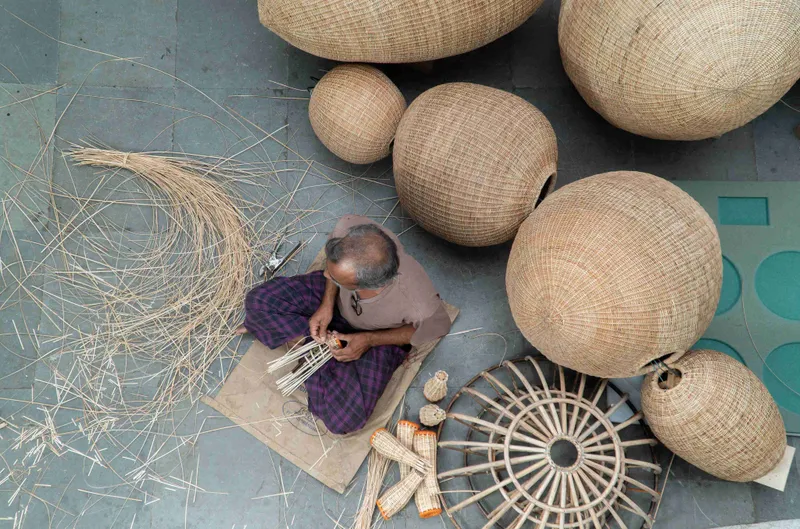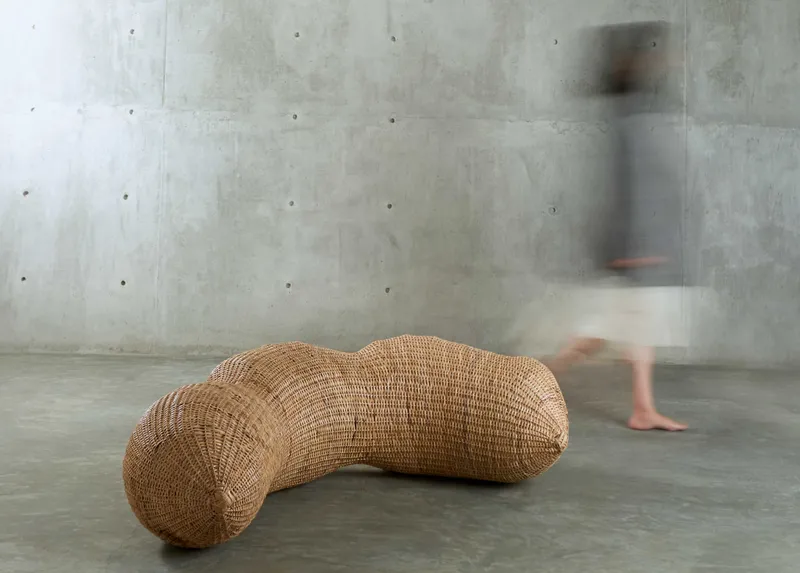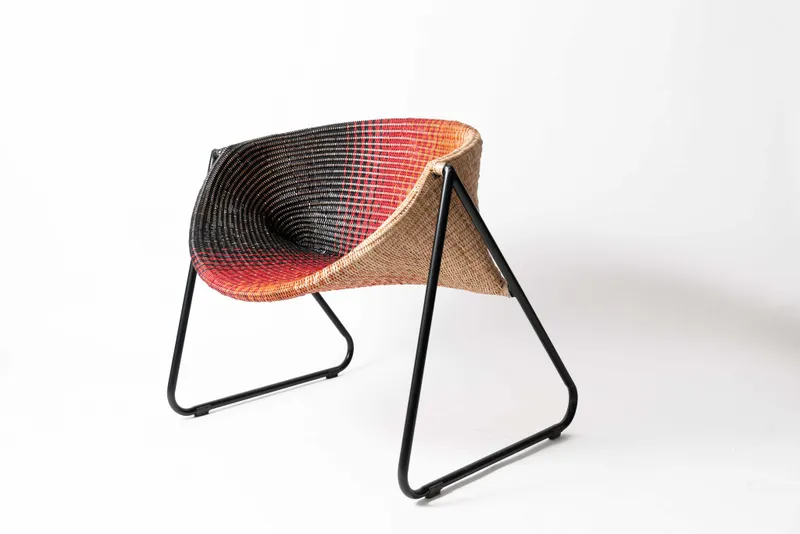This design studio’s cane and rattan furniture caught Sonam Kapoor, Shahid Kapoor’s interest
Founder of The Wicker Story, Priyanka Narula, takes us behind the scenes to show the versatility of cane and rattan craft.
Designer Priyanka Narula, an alum of the prestigious Institute for Advanced Architecture of Catalonia, Barcelona, has worked as an architect for six years. She has always been on the lookout for alternative methodologies to create new designs. However, she feels 3D printing and robot manufacturing take away from the soul of the design, especially in India.
“I believe when we speak of global design typologies, as Indians, since we have so much heritage and culture all around, we are forever conflicted that we are leaving our culture behind for the sake of the new,” she tells YS Life.
She spent time with karigars (artisans) and realised that these generational craftspersons offer so much more than what 3D printing technology could.

Artisan at work
Narula is the brain behind Hyderabad-based The Wicker Story (TWS) which creates expansive installations, inventive fabrications and furniture using cane and rattan craft. Her creations adorn the homes of Bollywood stars including Sonam Kapoor and Shahid Kapoor.
She founded TWS in 2019 as an offshoot of the architecture and design practice, Prelab Design Studio. Narula practised architecture for 5-6 years, including at the architecture firm Morphogenesis, before starting up.
Carving a niche
A fair organised by the Telangana government in 2018 commissioned a piece that had to speak about people. “We thought of creating something that revolved around nostalgia. The idea I took up was imli, also known as tamarind. Imli reminds you of childhood through its candies, playing around trees, or even food. That’s how the Imli bench came to life,” recalls Narula.

Imli by The Wicker Story The wicker story
To create the shape of imli in a large size, the first thought was to use computer numerical control technology and 3D printing. But Narula felt it was artificial.
“That's when we thought why not cane and rattan because it's a nostalgic material. Even in 2018, everyone had a cane and rattan piece in their grandparents’ homes but the younger generation wasn't buying it for their own spaces,” she points out.
When the first piece was built, its success became the starting point of TWS. “It wasn't just about the design but the material also connected it to a lot of people,” recalls Narula.
With nostalgia as the central theme, Narula also created the Lifafa chair, inspired by the memory of relatives gifting kids money in an envelope.

The Lifafa chair by The Wicker Story
For over a year, Narula and her team created more pieces and were invited to a popular design and home decor event. “We needed this time to figure out what the material meant to us, and what we could create with it,” says Narula, adding that by the end of the process, she was committed to setting up a small in-house workshop to produce her pieces.
A play of different forms
While cane and rattan were perceived as the ideal material for small-scale pieces, Narula was thinking big.
“Since I belong to an architectural background, I never understood the scale of furniture. I didn't understand how to design a small chair or tableware. What I was great at was designing pieces that were 10-15 feet in size, which isn't a norm in the lighting or furniture industry,” she adds.
Taking us behind the scenes, Narula talks about the versatility of the material that lends itself to different forms and shapes. For instance, earlier this year, she finished a 90-foot-long jointless installation created in handwoven or basketry technique. She also follows a zero-waste approach by working on sustainable and environmentally conscious pieces.
After setting up TWS’ workshop, she has explored new designs that traverse the terrain between pushing the craft and complexity in design. “Additionally, the more people said to me that no one will buy cane and rattan, I also came to realise there's a certain perception of quality associated with these materials,” informs Narula. “That's when we began researching the original source of the material and discovered that India is a hub of cane production.”
Despite the abundance of raw material, the local variety is six times more expensive than what is imported, says Narula. “Our material comes from Assam and Kerala, while the weaving material extracted from the same cane is procured from Bareilly.”

Sunset Bench by The Wicker Story
As the founder of TWS, Narula knew that the generic market wasn't for her, at least initially. So, she started exploring and experimenting with her designs, however, there was no formal collection for a long time. “Rather, our work became a centre point for a lot of architects to be imaginative. We were creating a design inventory and architects were saying we have the space, so let's create together,” she adds.
At this juncture, they kept custom-creating products for different spaces, which then became more than just a light furniture piece. “It became an art installation. A lot of my large-scale pieces find space between art and functionality.”
Moving ahead
Recently, TWS exhibited the Dawn to Dusk collection which has a generous use of colour. Narula points out that until last year, her work was largely monochromatic.
“One, I wanted people to value the geometries and 3Ds, and scale and craft we were doing. We didn't want the conversation to deviate to colour. Colour is very attractive—we said let's respect the craft and the craftsperson, and the design and the marriage between all of that,” she mentions.
In the collection, Narula has created myriad colour palettes to signify the sunrise, sunset or marshy lands. While the shapes and forms are not highly experimental, they are meant to be canvases. “The bench almost had the base framed; it was like the setting sun. The arc shape gave it a stable structure and the top surface became my canvas to build it,” explains Narula.
There is also a lighting series inspired by the mountains, which takes in the colours of the sunrise.
TWS is proud in terms of what they have brought to the craft industry at a national level by highlighting the beauty and functionality of cane and rattan. “We will be bringing out a new collection soon,” she concludes.
Edited by Kanishk Singh







